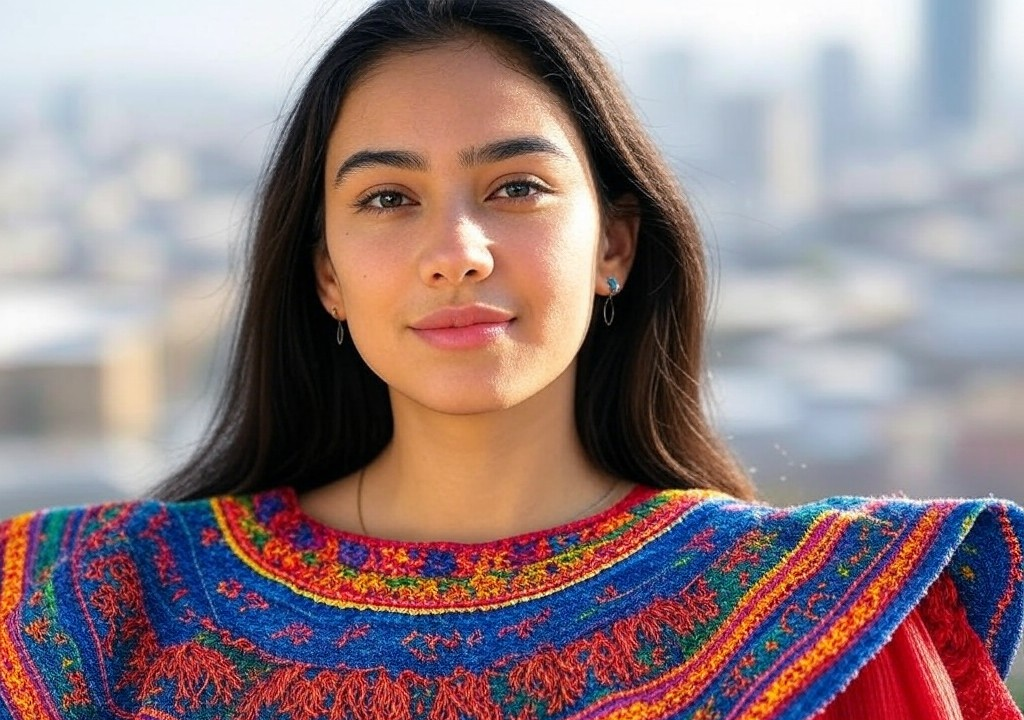Living Between Worlds
The Constant Balancing Act
I’ve been living between worlds for as long as I can remember, and trust me—it’s exhausting, beautiful, and borderline comical at times. Growing up in Santiago, I was surrounded by a swirl of traditional Chilean values. My parents, who could have been plucked out of a classic Latin American novel, believed in the virtues of education, family, and community. Then there was me—a kid sneaking off to listen to Shakira’s earlier albums and daydreaming about dramatic, star-crossed romances like the ones in Neruda’s poetry. For years, I juggled being the “dutiful daughter” while my head danced with questions about love and identity that sometimes didn’t quite fit within the framework of home.
Fast-forward to Madrid, where I pursued my Master’s in Cultural Studies. Spain opened up a new world of endless possibilities—think tapas at 10 PM, dating debates over cava, and slipping between the dance of tú and usted in conversations where cultural cues weren’t always in sync. My sense of belonging started to feel decidedly transitional, like packing a suitcase that never truly gets unpacked.
And then there’s the dating world. Falling for someone (whether in Santiago, Madrid, or Buenos Aires) while negotiating cultural and personal dualities? It’s like trying to salsa on a tightrope. Add modern romance into the mix, and you’ve got yourself a bilingual rom-com featuring mistranslated texts, conflicting expectations, and triumphs you never saw coming.
Love With a Side of Translating
Let’s start with this: dating across worlds means you’re always playing interpreter—between cultures, expectations, and sometimes even languages. Once, I was on a date with a Spaniard who said, “Eres muy maja.” For the uninitiated, maja loosely translates to “You’re nice,” but the implication can mean anything from polite admiration to “I’m mildly impressed.” I spent the better part of that week spiraling over whether I was being friend-zoned in real time or subtly seduced in a way I had yet to decode.
But interpreting goes deeper than just words. In Santiago, my parents expected suitors to show respect by, say, offering to meet the family (interpretation guide: this means serious intentions). In Madrid, casual dating is more, well, casual. A bottle of vermut on a balcony can equate to a deep commitment—potentially spurred by a shared night of tapas-induced euphoria. Navigating ongoing contrasts like these taught me valuable lessons about perspective: Sometimes, being patient and asking the right questions is infinitely better than assuming you know the answers outright.
Identities, Colliding and Collaging
One of the trickiest parts of living between worlds is figuring out how to hold onto your identity while also growing in ways that feel authentic to where you are. For example, lighting a candle on Nochebuena while making my abuelita’s pastel de choclo is non-negotiable, no matter where I live. It’s my anchor to home and the palpable warmth of everything I value. That said, I’ve also learned to embrace reinvention. Madrid introduced me to artisanal gin and tonics, the joy of siestas, and the simple yet profound art of saying, “No pasa nada,” when life inevitably goes wrong.
Similarly, love and relationships shape-shift depending on geography. Where I come from, there’s a deep appreciation for grand gestures and poetry. Neruda’s “Sonnet XVII” is practically engraved in the DNA of romance in Santiago: “I love you as certain dark things are to be loved, in secret, between the shadow and the soul.” Yet, somewhere along the way, I also discovered the pragmatic beauty of humor and self-deprecation that’s so beloved in Spain. I’ve learned that sometimes love is less about sweeping declarations and more about quietly laughing together over burnt paella or a missed Metro stop.
Heart-to-Heart Lessons for Navigating Dualities
Living between worlds teaches you more about yourself than you ever thought possible. Whether you’re balancing different cultural expectations, blending new traditions with old ones, or decoding what someone really means via text, the process is always a little messy but deeply rewarding. There’s no perfect blueprint, but here are a few tips to make the journey easier:
- Fall in love with flexibility. One of the best things about navigating dual identities is learning to embrace change. Traditions don’t have to stay static. Blend them. Bend them. Make them yours.
- Honor your roots, but don’t be afraid to grow elsewhere. Your past will always be part of you, whether through the recipes you cook, the poems you recite, or the lullabies you hum. Take it with you, but allow your current surroundings to seep into your present self, too.
- Communicate like your life depends on it. Whether in relationships or family dynamics, don’t assume people understand where you’re coming from. Share your perspective. Your history becomes even more powerful when you let others into it.
- Laugh (a lot) at the absurdities. I once tried to surprise my Madrid boyfriend with empanadas but forgot the Spanish doesn’t traditionally top tomato filling with merquen (Chilean spice blend). The look on his face was both bewildered and priceless. Turns out, loving across borders means loving some of the hilarious cultural “oops” moments, too.
- Be okay with not always “belonging.” The truth is, you might not always feel fully rooted in one world or the other, and that’s okay. Belonging is fluid. Focus on the connections you build, not the labels others assign to you.
The Beauty of the In-Between
If there’s one thing I’ve learned in all this bouncing between worlds, it’s that dualities don’t have to compete with each other. They can be braided into something more nuanced and magical. My life is richer for its blend of empanadas and jamón serrano, Neruda’s poetry and Joaquín Sabina’s lyrics, and a love life that requires Google Translate just as often as it does my heart.
There’s beauty in living between worlds, even in the moments when it feels like you’re spanning an awkward cultural gap. Perhaps it’s in those gaps—the surprising metaphors, the mistranslations, the laughter—that the richest connections are made. Along the way, you discover that the bridges you build don’t just connect you to others—they also bring you closer to yourself.




















